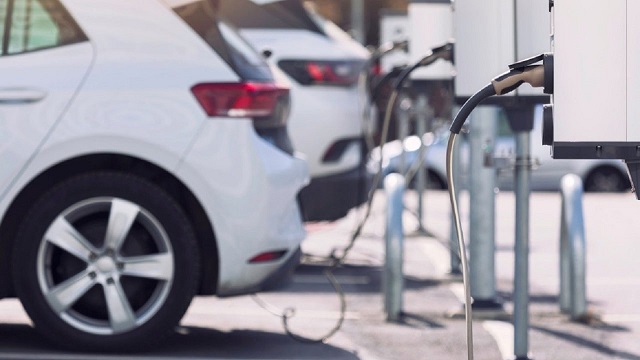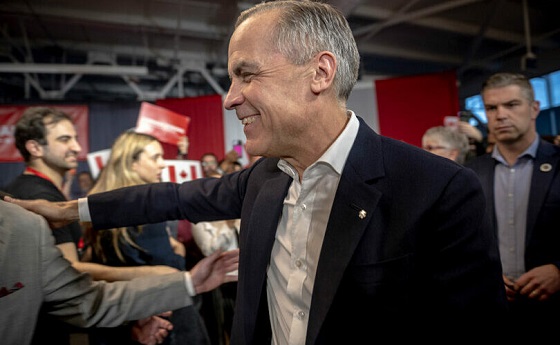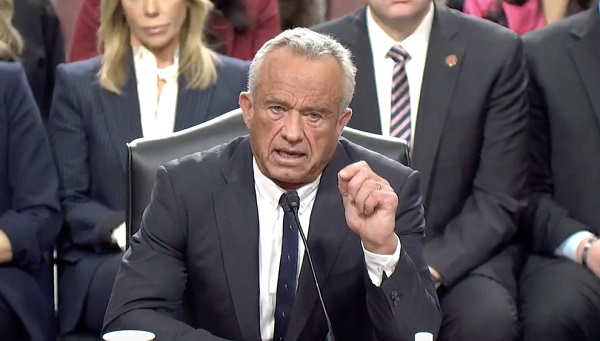Automotive
Energy Notes From the Edge: EV Industry on Limp-Home Mode; Greenpeace’s Firehose Used Against Them and They’re Not Happy

From the Frontier Centre for Public Policy
By Terry Etam
Consumers have spoken, auto makers are responding, and the odd man out are governments still paralyzed in 2019 when euphoric and nonsensical “environmental” policy danced on the supposed grave of last century’s fuel.
Summer was pretty quiet, thankfully, but time for a jolt to get reengaged. There’s no better way than getting yelled at, so today let’s talk about a surefire recipe – Electric Vehicles. Those that love EVs really love ‘em, and to speak ill of them in front of the fans is akin to asking questions about the size of their children’s ears.
EVs have an outsized role in the current cultural and economic landscape, in an odd way. They are seen as the best hope to turn the tide of general consumer emissions. Governments threw their full weight behind them to an astonishing degree, legislating them into projected dominance at an unprecedented (and as it turns out, insane) pace.
What makes EVs such a flashpoint is that they intersect with a bunch of stuff that people hold dear. For some, EV ownership feels like a major personal contribution to the global emissions problem, if owning one entails a significant personal commitment. For many, EVs make total sense if only running around town, or if wealthy enough to keep one in the garage amongst the Astons and Ferraris so as to be well-positioned to make an environmental statement if required. Some love them for their simplicity, with few moving parts and lower maintenance requirements (lower, but not zero). Still others love them because they can fuel up at home, at night. And then there is the cohort that feels their rage against oil companies sated cathartically every time they drive past a gas station, those that believe hydrocarbons bring nothing but death, irrespective of the fact that to that point in their life they’ve brought them everything within their purview, including all the things that keep them alive. Have pity on those people, the neutron-level boxing matches going on between their ears are not to be wished on anyone.
On the flip side of the equation, and what brings it to the news, is the public’s general feeling of “meh” towards them, the 80 percent that constitutes the non-extreme middle. In sane times, that is not a problem; major change happens gradually for such big ticket items, and most get a sense that certain segments of the economy work extremely well as EVs – delivery fleet vehicles, forklifts, urban taxis, etc. Many would drift toward EVs as battery technology improves, as range increases, as price falls. But such a shift would be a multi-generational thing, particularly with the infrastructure changes required.
Most consumers can see that that Total And Rapid EV Domination is not a particularly wise vision, even if governments have declared that that must happen within their dog’s lifespan.
Consumers do know a good idea when they see one, and we can see that by the explosion in popularity of hybrid vehicles – those with internal combustion engines augmented by modest battery packs and electric motors that give a certain emissions-free range before switching to gasoline power.
There’s a reason for this growing popularity – it makes sense on many levels. A hybrid removes some of the major reasons people are reluctant to go full-battery EV (BEV) – range anxiety, cold weather performance, etc. – and, as Toyota has wisely pointed out, hybrids are actually better for the environment in general than mass consumer adoption of EVs.
How can that be, you might wonder. Here is Toyota’s calculation, in what they call the 1:6:90 rule. An excellent write up can be found here, and the gist of it is: Because of immense challenges in finding, developing, mining, and processing critical metals and minerals (hundreds of new mines required globally, with each new mine having weaker grades than before, and with many jurisdictions becoming more hostile towards new mines), it makes more sense to utilize a given BEV’s minerals requirements to construct 90 hybrids instead.
Because many trips are very short, a hybrid can run on electric power for most of them, which is how the spreading-out of these minerals to many vehicles makes emissions reduction sense. Toyota calculates that if the metals/minerals used to construct a single EV were instead used to build 90 hybrids, the overall carbon reduction from those hybrids over their lifetimes would be 37 times that of a single EV (and with that sentence, I don my helmet for the incoming shouts of “Fossil Fuel Shill” – the aforementioned yelling).
Customers are clamouring to acquire hybrids. According to a Car Dealership Guy article (excellent auto news site, from a dealer perspective), in August, 48 percent of Toyota sales were hybrids, Hyundai had an 81 percent increase in hybrids (albeit from a relatively smaller number than Toyota), and Ford saw hybrid sales increase by 50 percent.
Volvo, a company that had pledged to be completely EV by 2030 and thereby banishing the smell of gasoline forevermore from customers’ nostrils, recently backed down from that pledge to announced hybrids would remain part of the equation indefinitely. “Everybody made a lot of assumptions two, three, four, five years ago, and that’s changed,” said Volvo’s CEO.
And then there is the Chinese onslaught of affordable, high-quality EVs that somehow policy planners didn’t see coming. Western countries announced bans on ICE in favour of full-EV by the next decade, and lo and behold, China controls most elements of an EV’s composition, and they took full advantage of that supply chain dominance (plus massive government support) to undercut virtually every western EV maker. Hey, you can’t do that, said US, Canadian, and EU governments, slapping huge tariffs on Chinese made EVs because well, we want to save the environment but not that badly (ultra cheap EVs are one of the few catalysts that would accelerate wide spread and rapid EV adoption among the masses).
Not sure where this goes next. Consumers have spoken, auto makers are responding, and the odd man out are governments still paralyzed in 2019 when euphoric and nonsensical “environmental” policy danced on the supposed grave of last century’s fuel. How they backpedal out of this is anyone’s guess, although there are signs, such as this headline: “Italy leads revolt against Europe’s electrical vehicle transition”. If memory serves from Italian traffic, they seem fine with virtually any sort of vehicular madness, so a automotive revolt in that land is a pretty big deal.
As with so, so many aspects of an energy transition, if the whole process had not been hijacked by zealots, we would be farther down the road, we would have consumers on side, we would have entire industries functioning properly instead of the fiascos we in for example the auto industry, and we most likely would have far less emissions.
Greenpeace USA on the ropes
In the big scheme of things, seeing something that has the words “green” and “peace” in the name fail would be disheartening; no sane person is against either the environment or peace. But put those two words together and you have something else entirely.
In the US, Greenpeace is for once holding the crappy end of the stick that they are used to jabbing at everything they disagree with. US energy pipeline giant Energy Transfer is seeking $300 million in damages for Greenpeace’s role in delaying the Dakota Access Pipeline. An ET victory would and should send shockwaves through the massively well financed protest industry that so far employs every tactic in the book to achieve victory (and by ‘victory’ we generally means ‘obstruction’ or ‘vengeance’ as opposed to any sort of constructive advancement). The big ENGOs spend hundreds of millions on staff and lawyers who literally have nothing to do other than bend society to their will without the bothersome hassle of going through the democratic process. Robert Bryce’s excellent Substack column keeps track of the staggering sums that US ENGOs churn through; Greenpeace US is a pipsqueak ($33 million annual engorgement) compared to locust-lawyer Natural Resources Defense Council’s staggering $548 million. With all that money, these groups construct nothing.)
It is a surprise there haven’t been more of these lawsuits filed by thwarted companies and hydrocarbon producers dragged into court for the sin of providing the fuel that keeps us all alive. It’s really not a hard argument to make; the world as we know it will collapse without hydrocarbon production, so shouldn’t thwarting that production on sometimes very flimsy grounds count for something? Shouldn’t blocking fuel from consumers that desperately need it (countless pipeline battles) count for something?
Greenpeace’s defence is pretty funny; suddenly they are insignificant, claiming to have had only a supporting role in the protests, and that the lawsuit is, the funniest part, an “attack on free speech.” Chaining one’s self (or worse, sending some naive acolyte to chain their selves) to a bulldozer on a construction site is, apparently, ‘free speech’, as is law fare and endless slanderous comments about the people and businesses that bring them the fuel that keeps their unhappy lives going.
Maybe the resurrected body, of which you can be certain will appear if this one is bankrupted, should start off with a bit of soul searching. Maybe peace means everyone working together for a common goal, not dramatizing a villain as the means of motivating the troops. Maybe ‘green’ should mean concern for habitat, concern for air pollution, concern for more intelligent use of resources, concern for the most logical global approach to progress, as opposed to a singular war against the bedrock of our society that it is glaringly obvious we cannot and will not live without.
First published here.
Terry Etam is a columnist with the BOE Report, a leading energy industry newsletter based in Calgary. He is the author of The End of Fossil Fuel Insanity. You can watch his Policy on the Frontier session from May 5, 2022 here.
2025 Federal Election
Trudeau and Carney Have Blown $43B on EVs

 David Krayden
David Krayden
General Motors laid off 500 workers at his Electric Vehicle (EV) plant in Ingersoll, ON.
It had nothing to do with the tariffs.
It had everything to do with the plummeting fascination that Canadians have for EVs. They are selling like used Edsels in the late 1950s. In a useless attempt to create a demand for these “green” vehicles (which aren’t actually green at all because the production of electricity does not result from magic) the governments of former Prime Minister Justin Trudeau and Ontario Premier Doug Ford wasted $42 billions of your tax money. And it was all to bolster an ideology not a demand for cars. There is no demand for these vehicles.
“You just lost 500 jobs. They’ve nuked those jobs. They’re not there anymore.”
-Dan McTeague

Ford, who saw this coming when he called an early provincial election that he knew he probably was going to lose if he waited for the anticipated vote, was actually honest to reporters when he admitted the layoffs had nothing to do with the dreaded Trump tariff but everything to do with public taste.
“What I understand from the president of General Motors that I spoke to, it’s going to be about 500 employees. Has nothing to do with the tariffs. He said, the volume is not there. People are not purchasing like they thought they would. So, they have thousands of vehicles sitting there. We make sure we support the workers and make sure that we get the government, especially Canada Post, to pick up some of these vehicles, because that’s what it’s geared for you.”

So, Ford expects Canada Post, another government agency on its last legs, to come to the rescue and pick up all these excess EVs? Sounds like it. The irony is that Ford came into office largely because the previous Liberal government had gone hog wild with its green energy program and hydro rates were among the highest in North America. Ford used to say that a industrialized province like Ontario can’t possibly prosper or even subsist on the energy provided by windmills and solar panels. He was right then but over the years he became firmly ensconced in the pocket of Trudeau and the Liberals, just as he is today with Mark Carney.

I spoke to my old friend Dan McTeague on Saturday about this mess. McTeague is a former Liberal MP from the GTA who is the president of Canadians for Affordable Energy today and well known for predicting gas prices across Canada as the @ gaspricewizard on X. As an MP, he always put principal above expediency, and he is no different today. McTeague is anxious for a Conservative Party of Canada (CPC) victory in this federal election and he is actively campaigning for a CPC nominee.

McTeague was not surprised over the dismal outlook for EVs.
“This is about Pierre Poilievre saying your policies are garbage. They’ve hurt Canadians. They’ve undermined the financial feasibility and sustainability of the federal government and the provincial government, and we’re going to get rid of them, just like we’re going to get rid of the CBC.”
-Dan McTeague
“Well, on the 22nd of March after having gone to the Ingersoll plant. I just tweeted a little while ago. I actually went there, filmed what was there in inventory. There were thousands of these vehicles just sitting there doing nothing. Obviously, Doug Ford didn’t get it on the 22nd of March. I said it says a lot about why the Ford nation is giddy about supporting Carney, he’s committed billions in world EV and battery manufacturing like this one in Ingersoll, where the provincial Feds kicked in over half a billion for bright drops. Was supposed to sell 100,000 units. Only sold 2100 actually, it got wrong. It was 2500 they might have probably given that a few away there. But look, this is anticipating what was there. It’s pretty obvious. I mean, I don’t just predict gas prices. Pretty good idea policies, EV mandates, the entire nets,” McTeague said.
McTeague explained that the “EV mandates are toast,” not just because President Donald Trump eliminated them but because they simply never had traction with consumers. He noted that Carney is playing games with the consumer carbon tax – because he hasn’t eliminated it but merely reduced it temporarily to zero – and has continued to keep emissions caps in place.
“Why are they doubling down on forcing us to have California-style appliances, which are extraordinarily costly to consumers. There are thousands of these things that are coming up. GFANZ, the Glasgow Financial Alliance for Net Zero that Mark Carney put forward, is now subject to antitrust review in the United States. This guy could be charged and billions of dollars taken away from the GFANZ organization,” McTeague said, adding that “anybody who hopped on the bandwagon a few years ago on net zero is now looking pretty damn foolish, and it’s amazing to see so many stunned Canadians falling in for this.”
“You just lost 500 jobs. They’ve nuked those jobs. They’re not there anymore.”

The former Liberal MP said the EV program is just one example of a failed economic record from the Trudeau-Carney regime. “However you slice it, the Liberals have had 10 years of failed policies. Net Zero has laid an egg. It’s not doing anything. And what they’re going to try to do is use a lot more public money and hopefully put enough wool over everyone’s eyes, so that we continue to go down this road of more recklessness as a result of what we’ve seen on EVs.
“Anybody who hopped on the bandwagon a few years ago on net zero is now looking pretty damn foolish, and it’s amazing to see so many stunned Canadians falling in for this.”
McTeague also wondered how the Ontario premier has moved from a commonsense politician on green energy to a cheerleader for Trudeau’s environmental authoritarianism. “For Doug Ford to have signed onto this. I mean, Shame on him, but it probably explains why he doesn’t want to support Pierre Poilievre.”
Said McTeague: “This is about Pierre Poilievre saying your policies are garbage. They’ve hurt Canadians. They’ve undermined the financial feasibility and sustainability of the federal government and the provincial government, and we’re going to get rid of them, just like we’re going to get rid of the CBC.”
“And so, for those reasons, you’re going to see why people are not supporting Pierre Poilievre, because they know, you know, they know which side of the bread is going to get buttered and for guys like Doug Ford, Bad mistake, back the wrong horse, and now we’re holding the bag. That’s why he called the election early.”
McTeague said the federal election is a watershed moment for people to decide what kind of future they want: prosperity or poverty. “If Canadians can’t get their head out of the sand and realize that they’re being duped that they can’t afford, you know, the saddling of the debts that these things are incurring for generations to come, and they think that somehow crapping on pipelines or putting emission caps that won’t allow us to make any more oil or gas to send these pipelines that they now suddenly have discovered are important … If we don’t wake up real soon, next two weeks, I can say confidently the next four years is basically cutting people.”
The energy expert predicted that the worst if yet to come if Carney wins a mandate to govern from the voters. “Nothing has changed, if anything, Mr. Carney and his company, as we well know, has lied on so many fronts. And here’s the big one that I’m going to say it here now, because I’ve said it many places before, but to be absolutely clear, you’re going to get a carbon tax, and that 20 cents you think you’re getting off. It’s going to be 40 cents by 2030, likely by the end of another government, “should they form a majority government.”
McTeague cautioned against Canadians becoming deluded and declaring, “Oh, we’re not worried about the future; we just don’t like Donald Trump, and we think Pierre Poilievre is like him.” Give your head a shake — because you know what, I’m going to spend a lot of time over the next few years, pointing back to the stupidity and frivolity of people. And make no mistake, David, these people know what they’re doing. They’re just trying to be cool and friendly because they made mistakes in 2015, 2019 and again in 2021 and they want to somehow think that they can justify bad decisions. What’s coming at the expense of the country? Coming at the expense of our economic sustainability? It’s likely coming at the expense of what concerns me even more so: the future of the federation of this country.”
“I’ve said it many places before, but to be absolutely clear, you’re going to get a carbon tax, and that 20 cents you think you’re getting off. It’s going to be 40 cents by 2030.”
Dan and I also discussed how he has discovered that much of the polling being conducted during this campaign is over-sampling people over 60, which comprise at least 50 percent of the respondents included in the surveys. This bodes well for Poilievre and the Conservatives.
Tomorrow I will be examining how the Consevatives are appealing to working class Canadians, labor union leaders and blue collar workers. Seeking and winning the “hard hat vote” worked for President Richard Nixon in 1972 and President Ronald Reagan in 1984. It can work for Poilevre too in 2025 — and somehow I think he realizes that.
WATCH: The Ugly Truth About Carney: Trudeau Subsidies Fail
CHECK OUT OUR KR NEWS INVESTIGATIVE SERIES ON MARK CARNEY

Rich Banker Man Mark Carney Caught by CBC & CTV Dodging Taxes

Liberal MP Encouraged the Abduction of Conservative Rival for Chinese Bounty

KR NEWSLETTER: Mark Carney to “Fold” “After the vote.” Carney’s Wife’s Eurasia Group Boss Spills the Beans on the Liberals’ “Elbows Up” Master Plan

GFANZ, Mark Carney’s Climate Cabal That Won’t Leave Us Alone

Mark Carney’s is China’s Man

KRN NEWSLETTER: Mark Carney Deep Dive + Disastrous Liberal Leadership Debates
Automotive
Tesla Vandals Keep Running Into The Same Problem … Cameras


From the Daily Caller News Foundation
By Hudson Crozier
People damaging Teslas in anger toward their owners and Elon Musk aren’t picking up on the fact that the vehicles have multiple cameras capable of catching them in the act.
At least nine perpetrators have been caught on video keying, writing graffiti or otherwise defacing Tesla vehicles in parking lots across the U.S. in the month of March alone. Most have led to an arrest or warrant based partly on the footage, which Tesla’s “Sentry Mode” automatically films from the side of the unattended vehicle when it detects human activity nearby.
“Smile, you’re on camera,” Tesla warned in a March 20 X post about its Sentry Mode feature. Musk’s company has been working to upgrade Sentry Mode so that the vehicles will soon blast music at full volume when vandals attack it. The camera system, however, has not stopped an increasing number of vandals from singling out Tesla owners, usually in protest of Musk’s work in the Trump administration for the Department of Government Efficiency (DOGE).
One incident happened on March 29, the same day leftists coordinated protests around the country for a “Global Day of Action” against Musk. That Saturday also saw alleged instances of violence at protests. The demonstrations stemmed from an online call to action by groups such as the Disruption Project, which encourages activists to foment “uprisings,” find a “target’s” home address and other confrontational tactics.
Tesla’s press team did not respond to a request for comment.
One man allegedly caught on camera keying a Tesla SUV on March 24 apologized to the owner who confronted him in a parking lot in Pennsylvania, police and media reports said. The man faces charges of criminal mischief, harassment and disorderly conduct for allegedly carving a swastika onto the vehicle.
“I have nothing against your car, and I have nothing against you,” the suspect said while the owner filmed him in the parking lot. “Obviously, I have something against Elon Musk.” The man called his own behavior “misguided.”
The defendant’s lawyer told Fox News his “client is a proud father, long-time resident, and is currently undergoing cancer treatment” and that he would not comment publicly “pending the outcome of the case.”
One of the most aggressive acts caught by Sentry Mode was in the case of a man who drove an ATV-style vehicle into a Tesla on March 25. Texas police identified the man as Demarqeyun Marquize Cox, arrested him and said he allegedly gave two other nearby Teslas the same treatment while also writing “Elon” on them. The public defender office representing Cox did not respond to a voicemail from the Daily Caller News Foundation.
Tesla cameras also caught three other people in Florida, Texas and Arizona keying and smearing bubble gum on the vehicles in March. The three suspects named by police do not have attorneys listed in county records available for contact.
Many of the vandalism cases since Trump’s return have reportedly caused thousands of dollars in damage for individual owners. For example, the bubble gum incident in Florida brought $2,623.66 in costs, while another keying incident in Minnesota brought $3,200.
Some reported attacks on Tesla vehicles and chargers have gotten the attention of federal law enforcement, including cases of alleged firebombing or shooting.
Two other suspected vandals in New York, one in Minnesota and one in Mississippi have reportedly avoided arrest for now — with one owner declining to press charges — but were all seen on the Teslas’ cameras scratching up the vehicles. Police identified the Mississippi suspect as an illegal migrant from Cuba.
One Tesla owner in North Dakota ridiculed a man who allegedly carved the letter “F” into his Cybertruck in a Costco parking lot — as seen on the Cybertruck’s camera. The defendant faces charges of criminal mischief, and county records say he is representing himself in court.
“I can’t believe this guy is potentially ruining his life to follow a political ideology,” the owner told WDAY News.
“If you’re going to vandalize these vehicles, you’re going to get caught,” the owner said.
-

 2025 Federal Election2 days ago
2025 Federal Election2 days agoMark Carney Wants You to Forget He Clearly Opposes the Development and Export of Canada’s Natural Resources
-

 International1 day ago
International1 day agoPope Francis’ body on display at the Vatican until Friday
-

 Business2 days ago
Business2 days agoHudson’s Bay Bid Raises Red Flags Over Foreign Influence
-

 2025 Federal Election2 days ago
2025 Federal Election2 days agoCanada’s pipeline builders ready to get to work
-

 2025 Federal Election22 hours ago
2025 Federal Election22 hours agoFormer WEF insider accuses Mark Carney of using fear tactics to usher globalism into Canada
-

 COVID-191 day ago
COVID-191 day agoRFK Jr. Launches Long-Awaited Offensive Against COVID-19 mRNA Shots
-

 2025 Federal Election1 day ago
2025 Federal Election1 day agoCanada’s press tries to turn the gender debate into a non-issue, pretend it’s not happening
-

 Business1 day ago
Business1 day agoTrump considers $5K bonus for moms to increase birthrate




